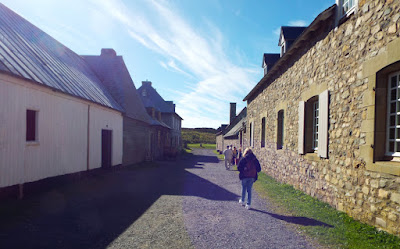Last week I bought a DVD of Fedor Bondarchuk's 2013 film, STALINGRAD.
Fedor is the son of Sergei Bondarchuk, who directed WATERLOO, and is an actor, producer, and director. The cast of STALINGRAD includes:
The plot of the film deals with the fight for a large building that is blocking a German advance. The building is held by five Russians soldiers and a young Russian woman (Katya) who they found inside when they took possession of the building. The German attackers are led by a German officer (Hauptmann Kahn) who has developed an obsession with a young Russian woman (Masha) who resembles his dead wife. The German officer's superior (Oberstleutnant Henze) proves to be a callous individual who will stop at nothing to be successful.
The film opens with scenes showing Russian troops being ferried across the River Volga towards the city of Stalingrad.
Newly-arrived Russian troops try to capture the oil tanks that hold the German Army's fuel reserves, but before they can do so Hauptmann Kahn blows the oil tanks up, dousing the attackers in flames.
The fighting is then concentrated around the centre of the city, and in particular the square containing the famous statue of the six children dancing in a circle.
Before the first major German assault on the Russian-held building is made, Oberstleutnant Henze makes what he regards as a pre-battle 'blood sacrifice' when he orders that a woman and child that he has ‘indentified’ as being Jewish are boarded up in a tramcar … which is then set alight by a flamethrower.
This act causes the Russian defenders to mount a pre-emptive attack on the Germans, forcing them to fall back.
This only delays the Germans, and several unsuccessful attacks are made before a number of panzers arrive on their way to attack the Russian bridgehead on the western bank of the Volga. By this time Oberstleutnant Henze has been killed (as has Masha), and Hauptmann Kahn leads a final assault on the Russian position, supported by the panzers.
The attack succeeds, but just as the Germans seize control of the building, the Russians call down an air strike on their position, killing the Germans and wiping themselves out in the process. Only Katya survives because Sergey Astakhov – who is the father of her unborn child – makes sure that she is moved to a safe nearby location before the final battle begins.
Fedor is the son of Sergei Bondarchuk, who directed WATERLOO, and is an actor, producer, and director. The cast of STALINGRAD includes:
- Pyotr Fyodorov (as Gromov)
- Dmitriy Lysenkov (as Chavanov)
- Alexey Barabash (as Nikiforov)
- Andrey Smolyakov (as Polyakov)
- Sergey Bondarchuk Jr. (as Sergey Astakhov)
- Oleg Volku (as Krasnov)
- Philippe Reinhardt (as Gottfried)
- Georges Devdariani (as Klose)
- Yanina Studilina (as Masha)
- Maria Smolnikova (as Katya)
- Thomas Kretschmann (as Hauptmann Peter Kahn)
- Heiner Lauterbach (as Oberstleutnant Henze)
- Polina Raikina (as Natashka)
- Yuri Nazarov (as Navodchik)
The plot of the film deals with the fight for a large building that is blocking a German advance. The building is held by five Russians soldiers and a young Russian woman (Katya) who they found inside when they took possession of the building. The German attackers are led by a German officer (Hauptmann Kahn) who has developed an obsession with a young Russian woman (Masha) who resembles his dead wife. The German officer's superior (Oberstleutnant Henze) proves to be a callous individual who will stop at nothing to be successful.
The film opens with scenes showing Russian troops being ferried across the River Volga towards the city of Stalingrad.
Newly-arrived Russian troops try to capture the oil tanks that hold the German Army's fuel reserves, but before they can do so Hauptmann Kahn blows the oil tanks up, dousing the attackers in flames.
The fighting is then concentrated around the centre of the city, and in particular the square containing the famous statue of the six children dancing in a circle.
Before the first major German assault on the Russian-held building is made, Oberstleutnant Henze makes what he regards as a pre-battle 'blood sacrifice' when he orders that a woman and child that he has ‘indentified’ as being Jewish are boarded up in a tramcar … which is then set alight by a flamethrower.
This act causes the Russian defenders to mount a pre-emptive attack on the Germans, forcing them to fall back.
This only delays the Germans, and several unsuccessful attacks are made before a number of panzers arrive on their way to attack the Russian bridgehead on the western bank of the Volga. By this time Oberstleutnant Henze has been killed (as has Masha), and Hauptmann Kahn leads a final assault on the Russian position, supported by the panzers.
The attack succeeds, but just as the Germans seize control of the building, the Russians call down an air strike on their position, killing the Germans and wiping themselves out in the process. Only Katya survives because Sergey Astakhov – who is the father of her unborn child – makes sure that she is moved to a safe nearby location before the final battle begins.




























































































.jpeg)









